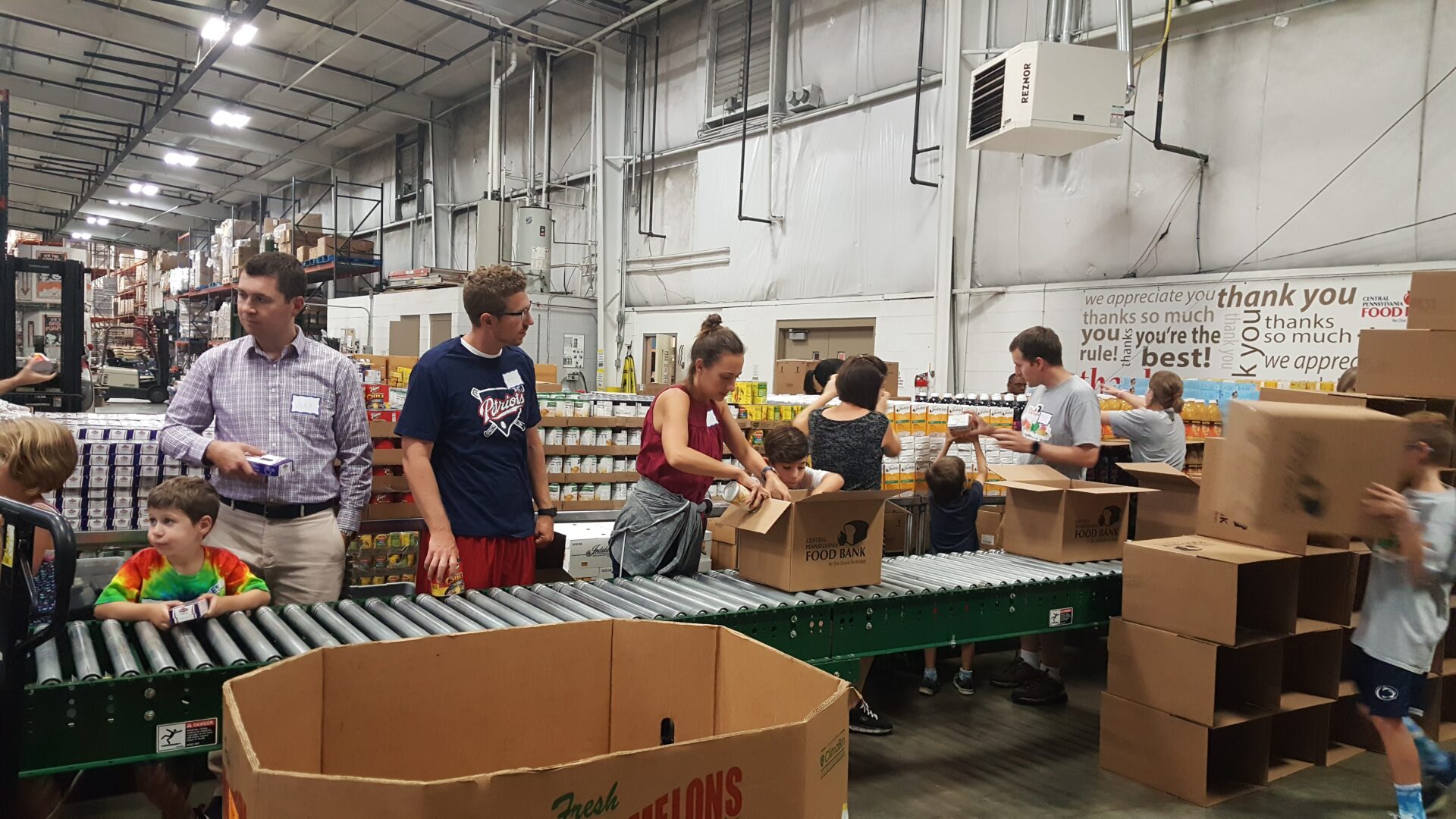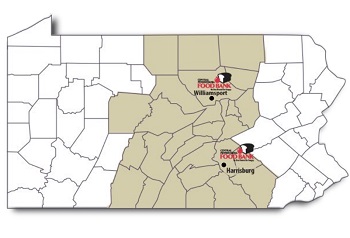
Early in the pandemic, in spring 2020, food insecurity in Pennsylvania surged to record levels when Gov. Tom Wolf ordered a statewide shutdown.
 The decision, intended to limit the spread of the novel coronavirus and prevent hospitals from being overwhelmed with patients, idled millions of workers who had little or no savings to fall back on. In March 2020, more than one-third of Pennsylvania households experienced food insecurity, according to Penn State University's Social Science Research Institute.
The decision, intended to limit the spread of the novel coronavirus and prevent hospitals from being overwhelmed with patients, idled millions of workers who had little or no savings to fall back on. In March 2020, more than one-third of Pennsylvania households experienced food insecurity, according to Penn State University's Social Science Research Institute.
Food insecurity remained elevated throughout 2020 and into 2021, with food pantries and food banks reporting deluges of families.
The situation was stabilized largely through massive infusions of federal assistance, including enhanced unemployment and Supplemental Nutrition Assistance Program (SNAP) benefits and waivers allowing expanded school lunch programs.
But many of those programs have ended, or are about to. School officials are sounding the alarm about the upcoming end of school lunch waivers. The American Rescue Plan Act's temporary enhanced child credit, which put several hundred dollars a month in the pockets of eligible parents, was not extended.
Enhanced pandemic SNAP benefits remain available through June. Since last summer, Pennsylvania's SNAP enrollment has risen to just under 1.9 million, comparable to the level seen early in the pandemic, reports NPR station WESA.
Meanwhile, inflation is putting new pressure on families' budgets. Visits to food banks are trending upward, and the number of families reporting insufficient food is up 40% since August, from 7.8% to 10.2%, reports the Washington Post, citing the U.S. Census' Household Pulse Survey.
That increased demand is being seen locally, Joe Arthur says.

Arthur is executive director of the Central Pennsylvania Food Bank, which partners with more than 1,200 agencies in a large swath of the state, including Lancaster County.
In 2021, the Food Bank provided 69.1 million pounds of food throughout its 27-county footprint, serving 152,000 people a month on average.
One United Lancaster spoke with Arthur as part of our coverage of the second anniversary of the coronavirus pandemic in Lancaster County. The following has been edited for length and clarity.
One United Lancaster: Let's talk about food security over the past few months and looking ahead.

Joe Arthur: The good news is that we're definitely not experiencing the Covid disaster from a food security standpoint that we were dealing with for most of the two years of the pandemic.
But starting in February and now into March, we've been seeing a slow steady increase in food assistance calls and the amount of food that our partner agencies order.
Pretty much everybody seems to feel that's in part from inflation, as well as federal benefits having for the most part ended during 2021, with the exception of SNAP. It's thankfully still operating through June under the pandemic rules. That's a good thing! But the child tax credit, you know, those things have really impacted households.
Like other sectors of the economy, the food industry and the charity food system have been affected by supply chain challenges.
Arthur: The big challenge has been around canned fruits and vegetables, those types of core products, even the steel for the cans.
Thankfully, we built out our cold chain infrastructure with many of our partner agencies over past 10 years so we've been able to pull those levers pretty well. We've been able to substitute (for canned goods) with fresh produce and frozen vegetables and the like.
I will say that cost inflation exists at the wholesale level as well as retail. We're seeing same kind of price increases that the American consumer is seeing.
OUL: Can you quantify that?
Arthur: This is just rough, but over the past six months, we're looking at 20% to 25% cost increases on purchased food.
OUL: Are gas prices factored into that? Are you seeing additional issues with gas prices?
Arthur: It's actually both. Fuel and transportation are built into anything that has to be shipped. Our trucks are diesel. We have 26 trucks, anything from refrigerated box trucks to tractor-trailers. (They're) getting less than 10 mpg because they're big trucks. It's tens of thousands of dollars a month increase just putting the fuel in our trucks.
OUL: How do you adjust your strategy?
Arthur: Strategy No. 1 is: We always need to meet the need and meet it with healthy food. We're leaning as much into fresh produce as we can because anything that's processed is more expensive. Anything that's straight from the farms or in bulk, we're leaning into all of those sources.
We are staying out there and engaged with donors, letting them know this isn't over. We've always been really good at cost control. In times of rising prices, you have to stay on top of it. Thankfully, we haven't done any major expansions recently, so we're just running our equipment and our facilities hard. People are still working hard. We're doing everything we can to keep our cost base from jumping.
That's challenging, but it's something that we're good at. Thankfully, donors have been very generous during the whole (pandemic). We're deploying some crisis funding into this new crisis around cost inflation. That's helped us get ready for this.
OUL: Are you starting to strategize in case there's a fall Covid-19 surge?
Arthur: We structured ourselves to deal with surges. We've extended a lease on an offsite facility where we do all our packing. If we're dealt another surge, we'll be able to handle it.
OUL: Is that just that you have more capacity, or does that particular facility allow for social distancing?
Arthur: It allows us to do social distancing. We have plenty of room to store product there. We can store more product, we can acquire more and we can "surge" our capacity to box up food if we need to.
Our view is that even if we get a surge, it's highly unlikely there'll ever be the kind of government approach that shuts the economy down. That's the big thing that created the surge in demand in 2020 and 2021. We don't believe the state or federal government will do that to that degree again. Anything else would be from a food assistance standpoint, a kind of "mini-surge," for lack of a better word. We can handle that with the capacities we have now.





